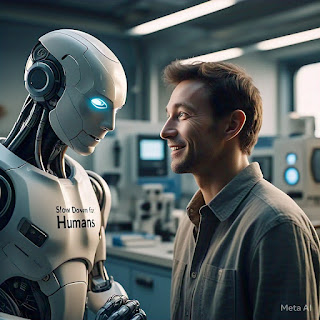The Call for Biosecurity Guardrails in AI: A Growing Concern for Governments
Why It Matters: Advanced AI models, especially those trained on genetic sequences, are revolutionizing the field of biology by aiding in the design of new medicines and vaccines. However, the same technology could potentially be used to create or enhance pathogens, posing significant biosecurity risks. As these AI models continue to evolve, biosecurity experts are urging governments to establish new safeguards to mitigate these dangers.
The Current Landscape: At a recent event hosted by the Center for a New American Security, Sonia Ben Ouagrham-Gormley, Deputy Director of the Biodefense Graduate Program at George Mason University, addressed the misconception that AI can easily facilitate the production of biological weapons. She emphasized that "producing biological weapons is very complex, very complicated," and today's large language models, due to the limited data available, do not yet increase the risk of bioweapon creation.
However, experts, including those from OpenAI and RAND, caution that it's only a matter of time before AI models become more sophisticated. Anita Cicero, Deputy Director of the Johns Hopkins Center for Health Security, noted the potential future capabilities of AI, including automated and cloud-based labs that could reduce the level of expertise required to conduct dangerous experiments.
The Urgency for Action: In a recent publication in the journal Science, Cicero and her colleagues argue that AI developers must evaluate their models but that this effort alone is not enough. They call on governments to take a more proactive approach by evaluating AI models trained on large or sensitive biological data before these models are released. This could prevent potential risks without stifling academic freedom.
Furthermore, the group advocates for companies and institutions that synthesize nucleic acids—essentially turning genetic information into physical molecules—to screen their customers and orders. This precautionary measure could prevent malicious actors from accessing dangerous biological materials.
Challenges Ahead: Despite the consensus on the need for regulation, some researchers, like Ouagrham-Gormley, argue that a deeper understanding of AI's capabilities in biological settings is required before implementing stringent regulations. This understanding will help in better assessing the risks and tailoring appropriate safeguards.
Looking Forward: Tom Inglesby, Director of the Johns Hopkins Center for Health Security, emphasized the importance of the U.S. and other leading nations in the field setting up robust governance systems for AI in biology. He highlighted the need for international harmonization, drawing parallels with other safety and security issues in science.
As AI continues to advance, it is crucial that governments, researchers, and AI developers work together to create a balanced approach that maximizes the benefits of AI in biology while minimizing the risks.
Conclusion: The intersection of AI and biology holds tremendous potential for scientific advancement, but it also presents unprecedented challenges. By setting up the necessary guardrails now, we can ensure that AI's contributions to biology are safe, secure, and ultimately beneficial to society.
J. Poole
08/26/24

No comments:
Post a Comment